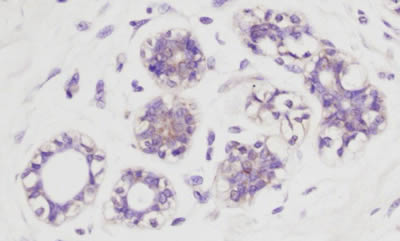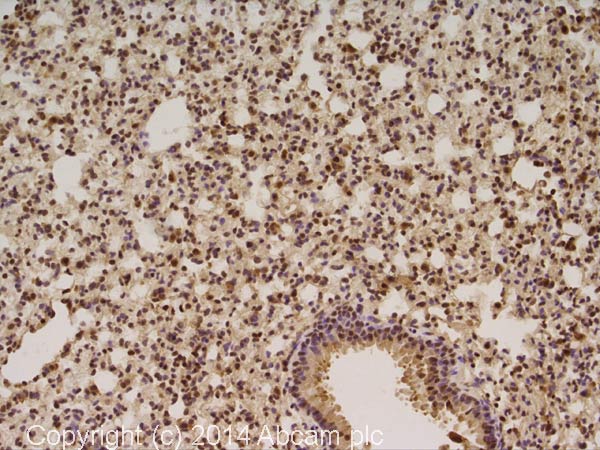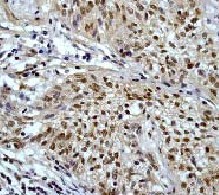| Gene Symbol |
AKT1
|
| Entrez Gene |
280991
|
| Alt Symbol |
-
|
| Species |
Bovine
|
| Gene Type |
protein-coding
|
| Description |
v-akt murine thymoma viral oncogene homolog 1
|
| Other Description |
PKB alpha|RAC-PK-alpha|RAC-alpha serine/threonine-protein kinase|protein kinase B alpha|v-akt murine thymoma viral oncogene-like protein 1
|
| Swissprots |
Q5ER96 Q01314
|
| Accessions |
DAA17274 Q01314 AY781100 AAW71957 X61036 CAA43371 NM_173986 NP_776411
|
| Function |
AKT1 is one of 3 closely related serine/threonine- protein kinases (AKT1, AKT2 and AKT3) called the AKT kinase, and which regulate many processes including metabolism, proliferation, cell survival, growth and angiogenesis. This is mediated through serine and/or threonine phosphorylation of a range of downstream substrates. Over 100 substrate candidates have been reported so far, but for most of them, no isoform specificity has been reported. AKT is responsible of the regulation of glucose uptake by mediating insulin-induced translocation of the SLC2A4/GLUT4 glucose transporter to the cell surface. Phosphorylation of PTPN1 at 'Ser-50' negatively modulates its phosphatase activity preventing dephosphorylation of the insulin receptor and the attenuation of insulin signaling. Phosphorylation of TBC1D4 triggers the binding of this effector to inhibitory 14-3-3 proteins, which is required for insulin-stimulated glucose transport. AKT regulates also the storage of glucose in the form of glyco
|
| Subcellular Location |
Cytoplasm {ECO:0000250}. Nucleus {ECO:0000250}. Cell membrane {ECO:0000250}. Note=Nucleus after activation by integrin-linked protein kinase 1 (ILK1). Nuclear translocation is enhanced by interaction with TCL1A (By similarity). Phosphorylation on Tyr-176 by TNK2 results in its localization to the cell membrane where it is targeted for further phosphorylations on Thr-308 and Ser-473 leading to its activation and the activated form translocates to the nucleus (By similarity). {ECO:0000250}.
|
| Top Pathways |
Apoptosis, Tight junction, VEGF signaling pathway, Focal adhesion, Toll-like receptor signaling pathway
|


![All lanes : Anti-AKT1 antibody [4D6] (ab124341) at 1/500 dilutionLane 1 : HEK293T cell lysate transfected with pCMV6-ENTRY control cDNALane 2 : HEK293T cell lysate transfected with pCMV6-ENTRY AKT1 cDNALysates/proteins at 5 µg per lane.](http://www.bioprodhub.com/system/product_images/ab_products/2/sub_1/4436_AKT1-Primary-antibodies-ab124341-1.jpg)


![Anti-AKT1 antibody [Y90] (ab32510) at 1/1000 dilution + MCF7 cell lysate](http://www.bioprodhub.com/system/product_images/ab_products/2/sub_1/4456_ab32510_1.jpg)